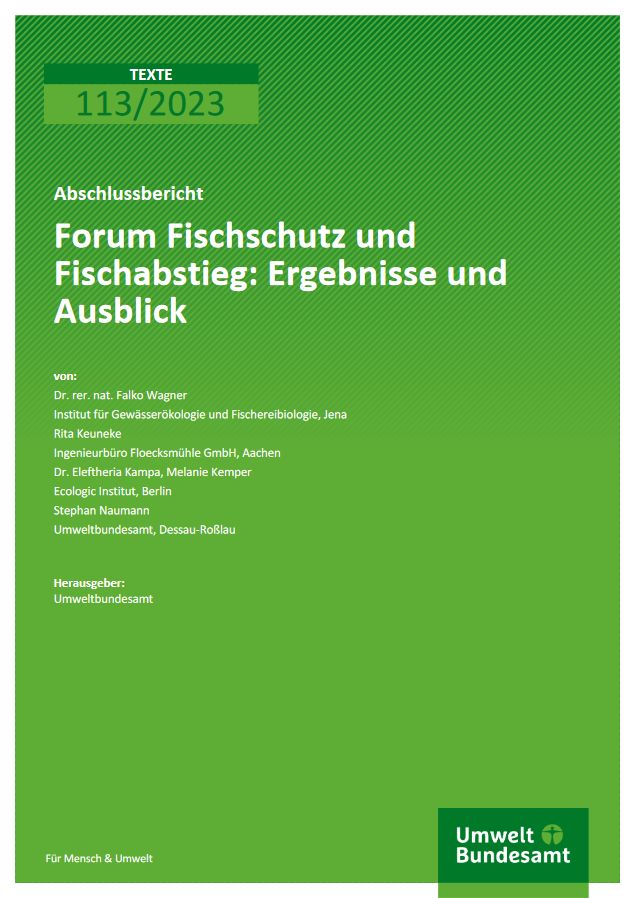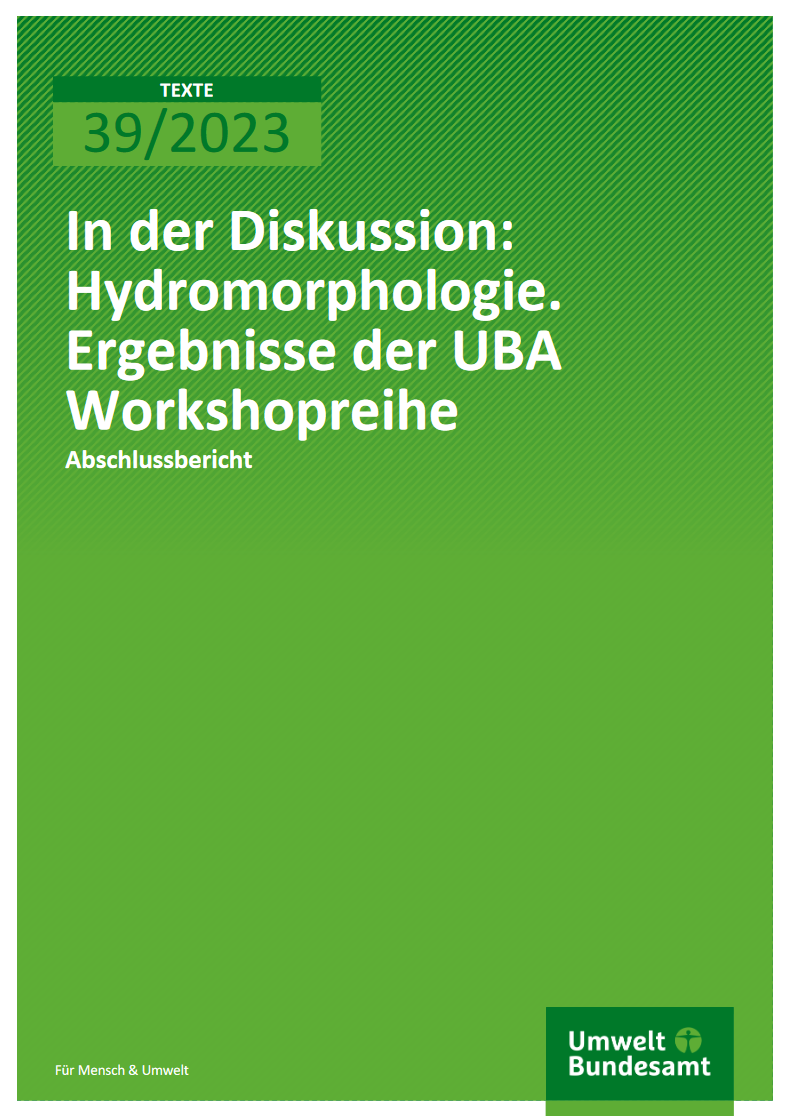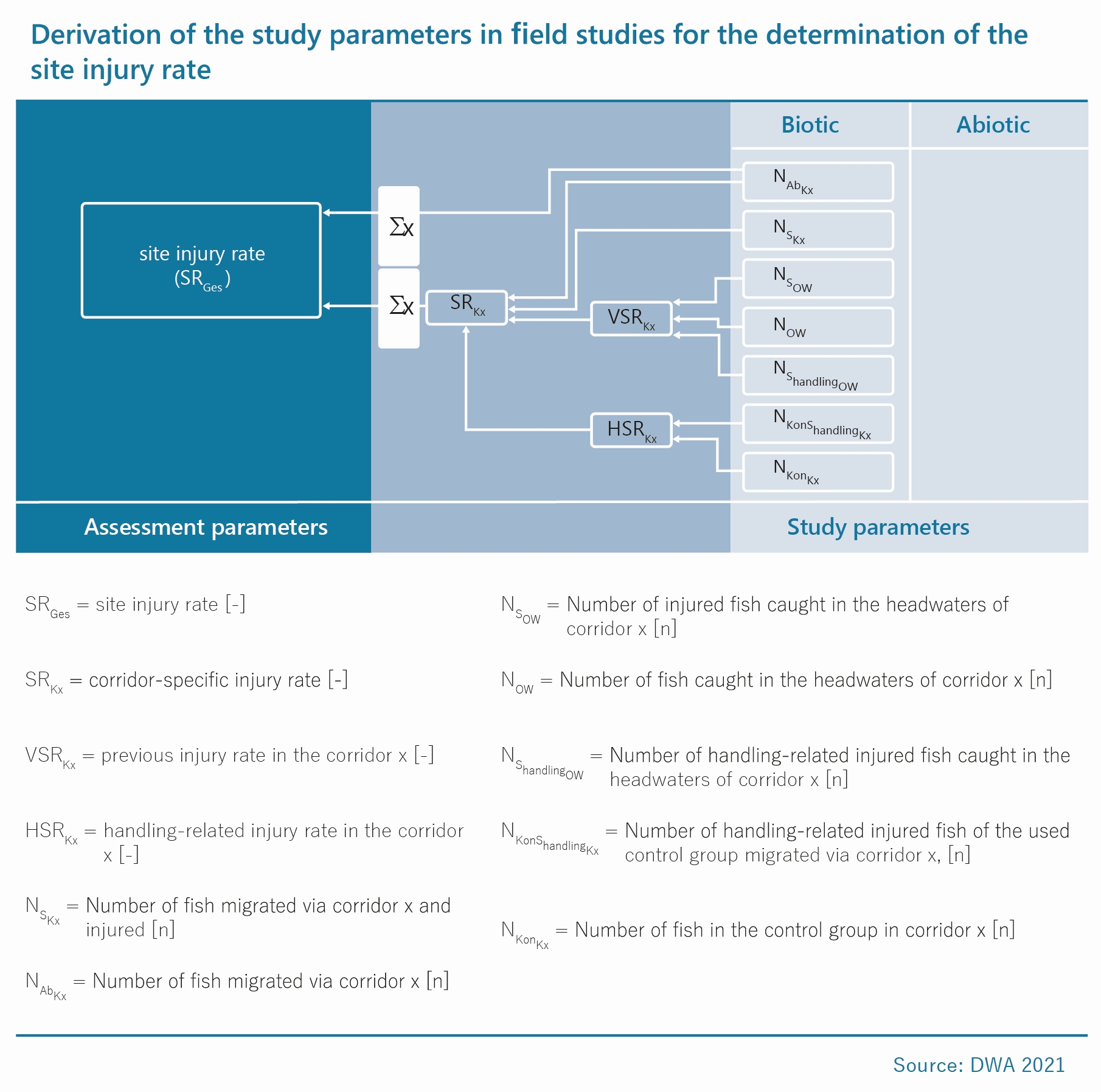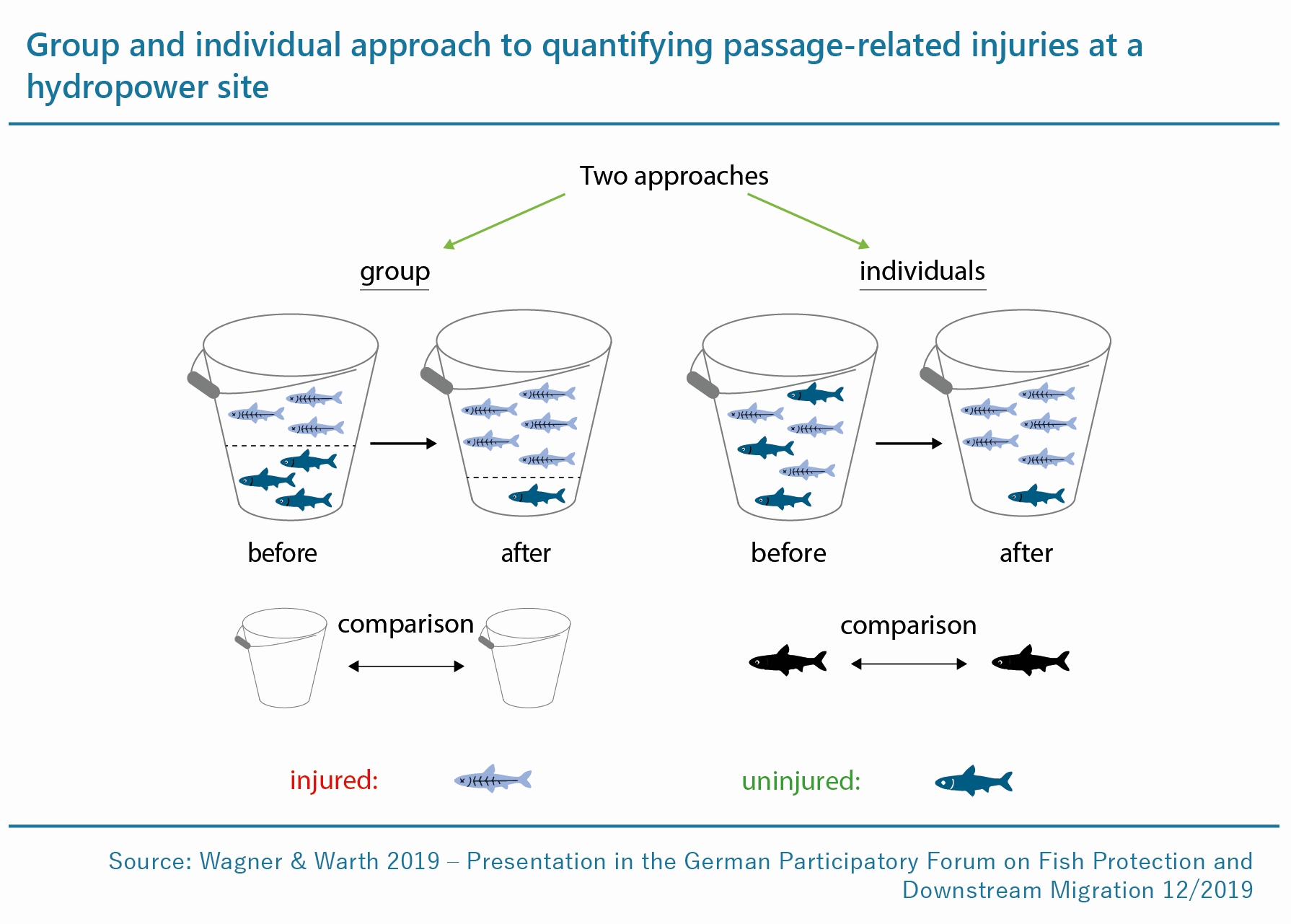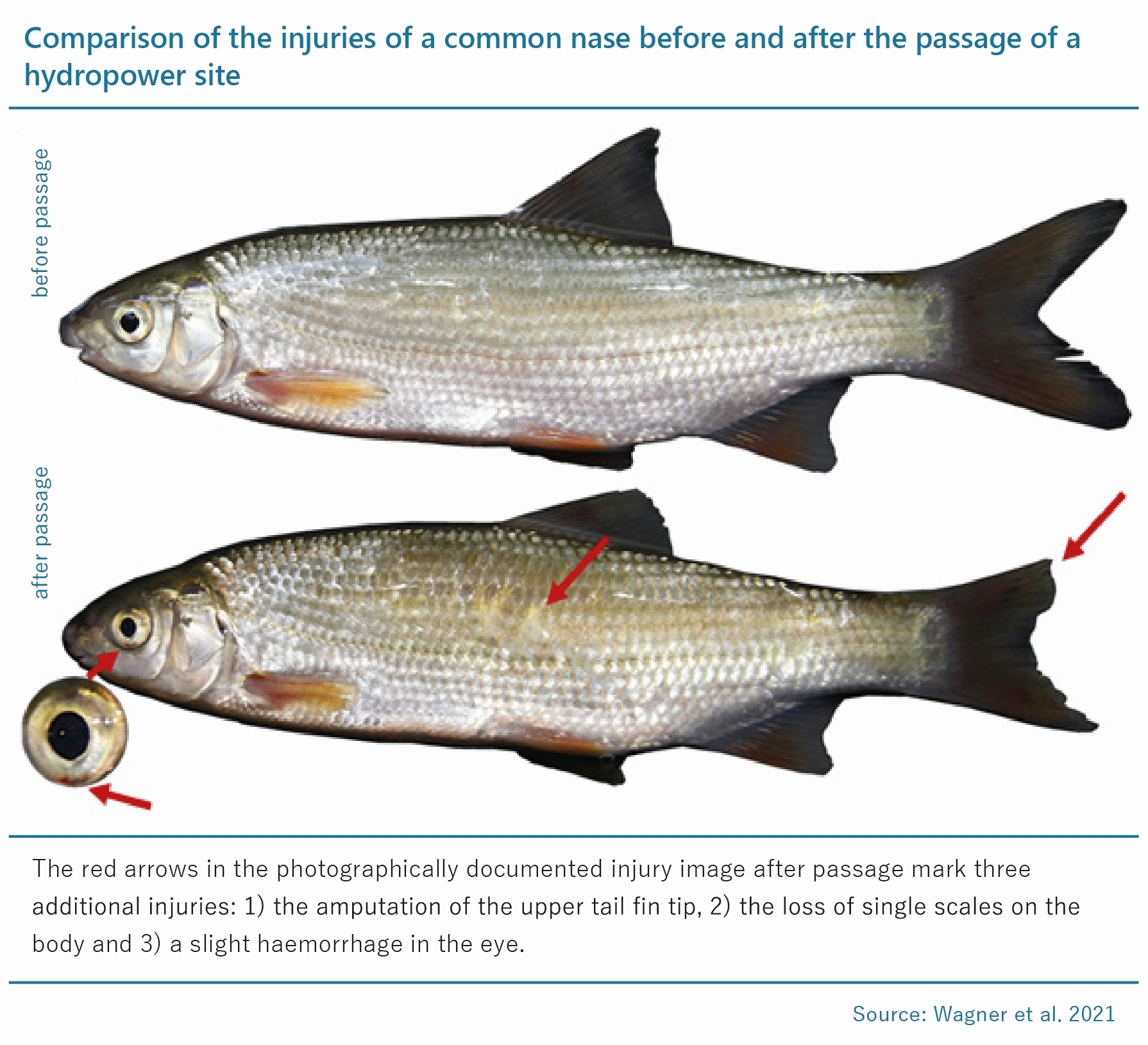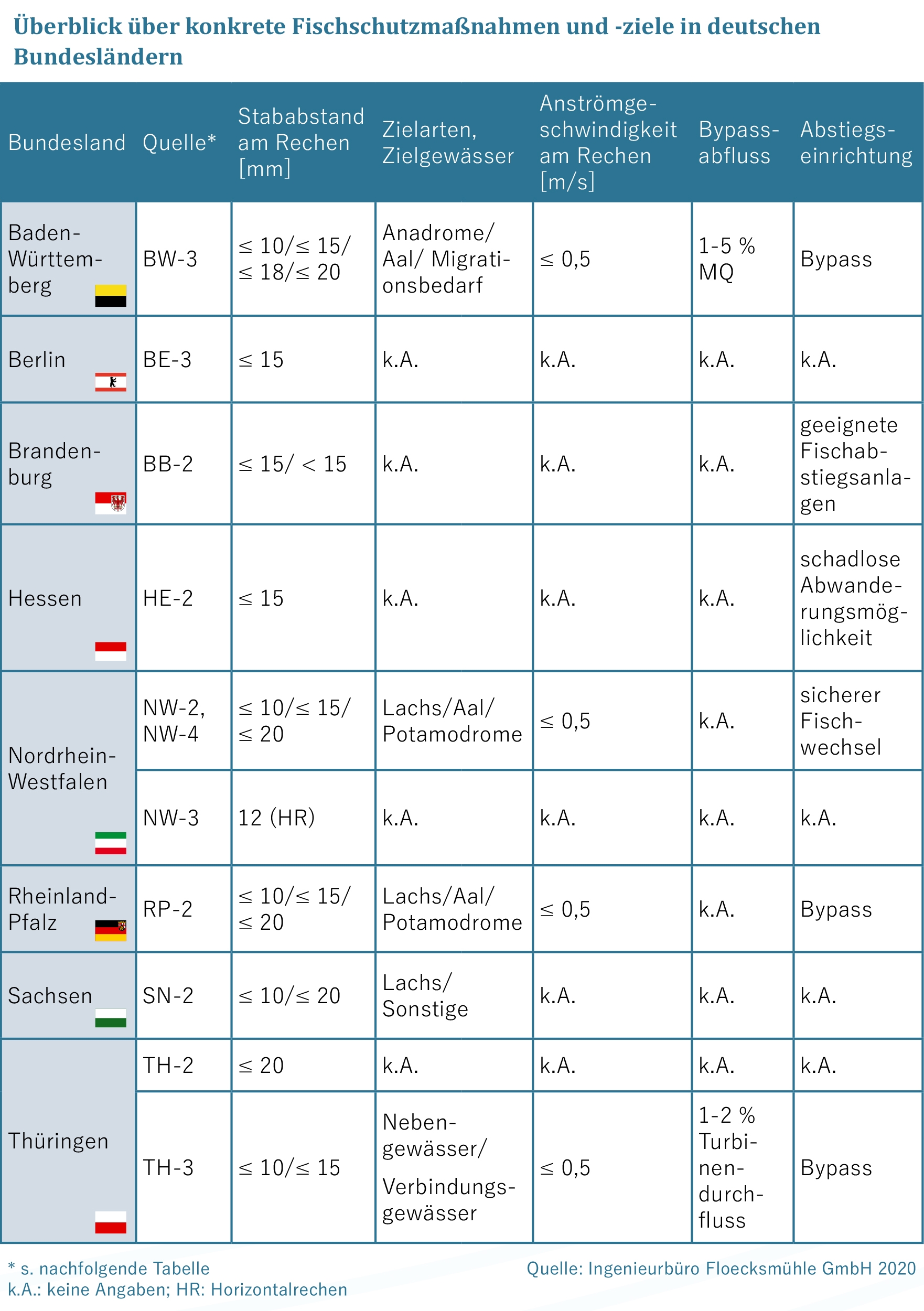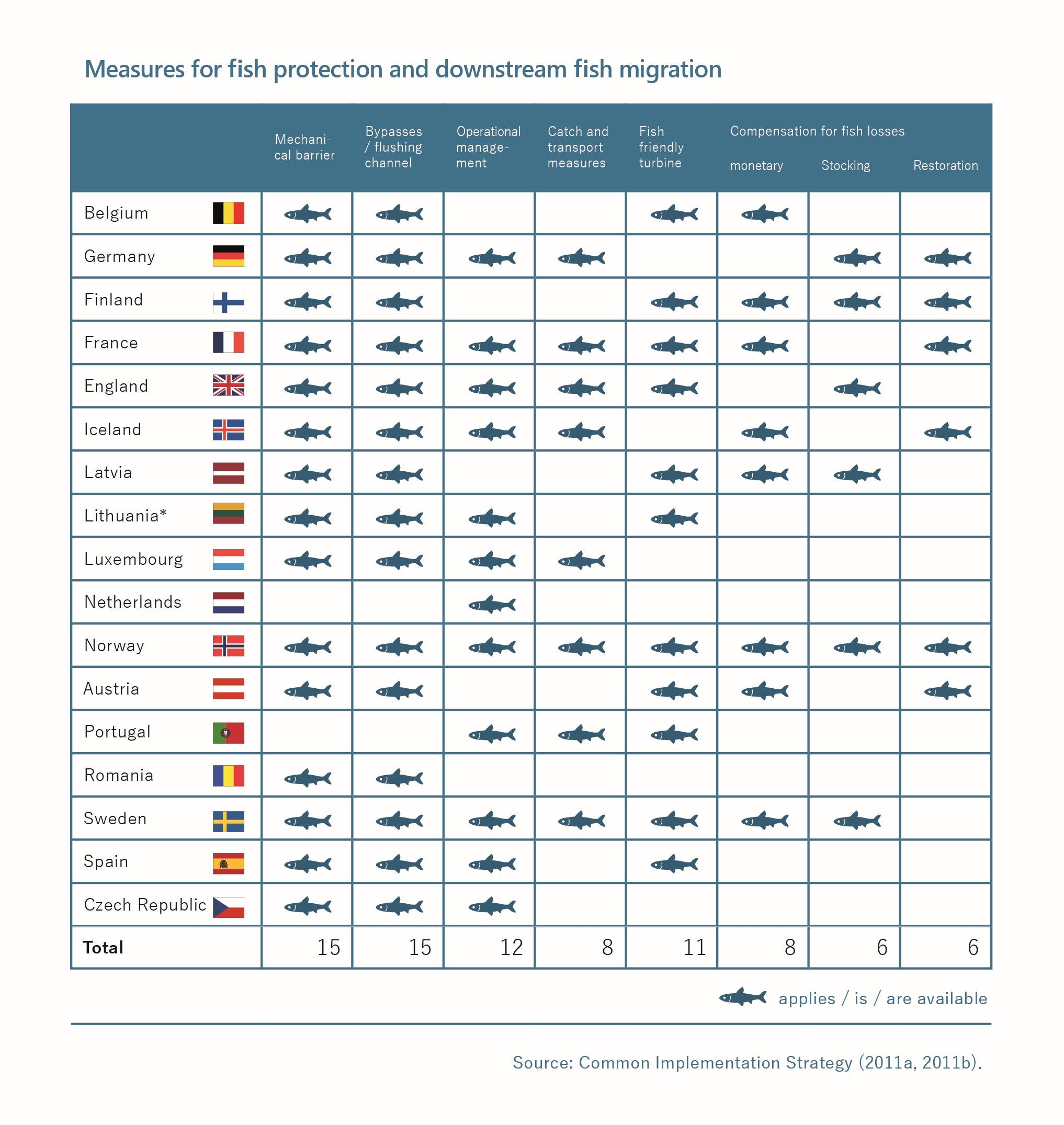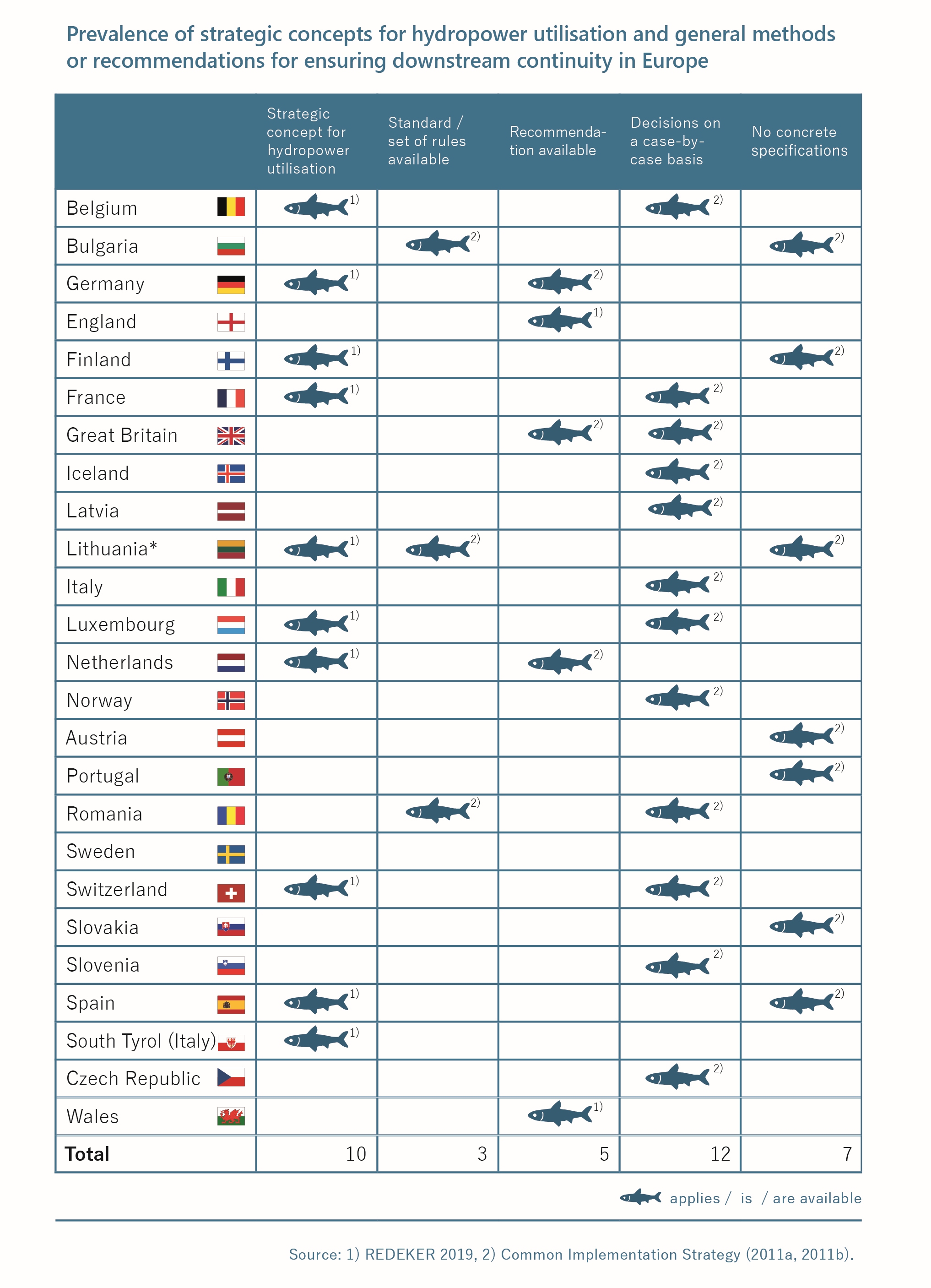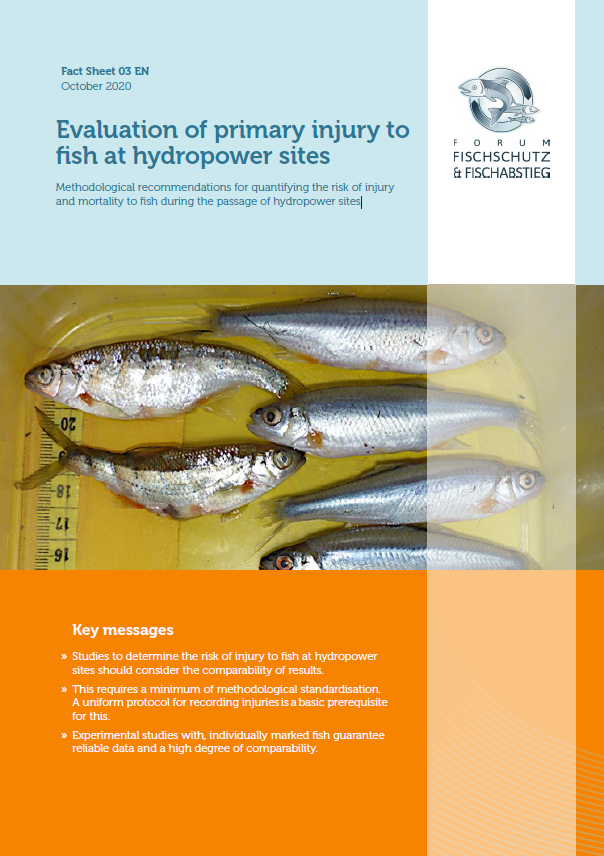Advantages and Disadvantages of Using Downstream Migrating Fish or an Experimental Approach to Determine the Mortality Risk
- Publication
- Citation
Ecologic Institute 2020: Advantages and disadvantages of using naturally downstream migrating fish or an experimental approach to determine the mortality and injury risk. Infographic published in: Wagner, F. and P. Warth 2020: Evaluation of primary injury to fish at hydropower sites. Jena: Institute of Aquatic Ecology and Fish Biology (IGF Jena).
When planning the studies, the fundamental question arises as to whether naturally downstream migrating fish or introduced experimental fish should be used, and thus whether an experimental approach is required. Both approaches have their advantages and disadvantages.
The decisive disadvantage when focus only on naturally downstream migrating fish is the methodological problem of determining the previous injury rate of the fish in the headwaters with downstream migration "intention" in a representative way. For previously injured fish, neither electrofishing nor net fishing can assume the same catch efficiency as for healthy fish, as the mobility and activity of the two groups is very likely to differ. This aspect can lead to considerable inaccuracies in the data when calculating injury rates for a corridor and the entire site. When determining the mortality rate, this effect is less pronounced, but may also lead to incorrect results. Furthermore, a quantification of the method-related injury is also necessary in the case of natural downstream migration. The use of the control group necessary for this, including the tagging of fish can be considered an animal experiment in the European Union (EU) requiring official approval, which means that the expense is just as high as when applying for approval for the experimental approach.
This illustration shows advantages and disadvantages of using naturally downstream migrating fish or an experimental approach to determine the mortality and injury risk. It is part of a fact sheet on primary injury to fish at hydropower sites.
The infographic is published under a creative commons license CC BY 4.0. That means it can be copied and redistributed in any medium or format and for any purpose as long as appropriate credit to the authors (Ecologic Institute, Institute of Aquatic Ecology and Fish Biology) is given.
